
Witham is a town in the county of Essex in the East of England, with a population of 25,353. It is part of the District of Braintree and is twinned with the town of Waldbröl, Germany. Witham stands between the city of Chelmsford and the City of Colchester, on the Roman road between the two. The River Brain runs through the town and joins the River Blackwater just outside.

Fitzsimons Army Hospital, also known as Fitzsimons General Hospital, renamed Fitzsimons Army Medical Center in 1974, and Fitzsimons Building in 2018 was a U.S. Army facility located on 577 acres (234 ha) in Aurora, Colorado. The facility opened in 1918 and closed in 1996. The grounds were then redeveloped for civilian use as the Anschutz Medical Campus and the Fitzsimons Innovation Community.
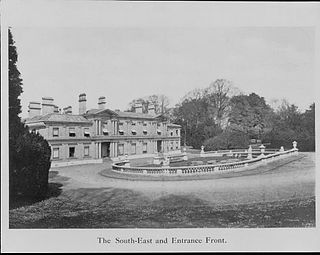
Aston Clinton House was a large mansion to the south-east of the village of Aston Clinton in Buckinghamshire, England.

The Walter Reed Army Medical Center (WRAMC), officially known as Walter Reed General Hospital (WRGH) until 1951, was the U.S. Army's flagship medical center from 1909 to 2011. Located on 113 acres (46 ha) in Washington, D.C., it served more than 150,000 active and retired personnel from all branches of the United States Armed Forces. The center was named after Walter Reed, a U.S. Army physician and sergeant who led the team that confirmed that yellow fever is transmitted by mosquitoes rather than direct physical contact.

The Essex Regiment was a line infantry regiment of the British Army in existence from 1881 to 1958. The regiment served in many conflicts such as the Second Boer War and both World War I and World War II, serving with distinction in all three. It was formed in 1881 under the Childers Reforms by the amalgamation of the 44th Regiment of Foot and the 56th Regiment of Foot.

The Royal Victoria Hospital or Netley Hospital was a large military hospital in Netley, near Southampton, Hampshire, England. Construction started in 1856 at the suggestion of Queen Victoria but its design caused some controversy, chiefly from Florence Nightingale. Often visited by Queen Victoria, the hospital was extensively used during the First World War. It became the 28th US General Hospital during the invasion of mainland Europe in the Second World War. The main building – the world's longest building when it was completed – was entirely demolished in 1966, except for the chapel and former YMCA building, which still survive. The extensive outbuildings, which once occupied a vast acreage of land to the rear of the main building, finally succumbed in 1978. The site of the hospital can be seen and explored in Royal Victoria Country Park.

Cassiobury Park is the principal public park in Watford, Hertfordshire, in England. It was created in 1909 from the purchase by Watford Borough Council of part of the estate of the Earls of Essex around Cassiobury House which was subsequently demolished in 1927. It comprises over 190 acres (77 ha) and extends from the A412 Rickmansworth Road in the east to the Grand Union Canal in the west, and lies to the south of the Watford suburb of Cassiobury, which was also created from the estate. The western part is a 62-acre (25.1 ha) Local Nature Reserve managed by the Herts and Middlesex Wildlife Trust. The park hosts the free, weekly timed parkrun 5 km event every Saturday morning at 9 am, starting on the field near the Shepherds Road entrance to the park, and finishing by the bandstand.

Hylands House is a Grade II* neo-classical villa situated within Hylands Park a 232-hectare park southwest of Chelmsford in Essex in South East England. It is owned and operated by Chelmsford City Council.

The Essex Yeomanry was a Reserve unit of the British Army that originated in 1797 as local Yeomanry Cavalry Troops in Essex. Reformed after the experience gained in the Second Boer War, it saw active service as cavalry in World War I and as artillery in World War II. Its lineage is maintained by 36 Signal Squadron, part of 71 (Yeomanry) Signal Regiment, Royal Corps of Signals.
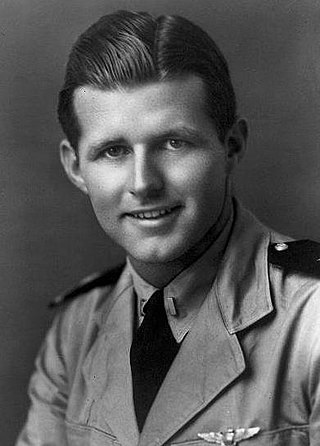
Joseph Patrick Kennedy Jr. was a lieutenant in the U.S. Navy. He was a member of the Kennedy family and the eldest of the nine children born to Joseph P. Kennedy Sr. and Rose Fitzgerald Kennedy. During World War II, Kennedy was killed in action while serving as a land-based patrol bomber pilot, and posthumously awarded the Navy Cross.
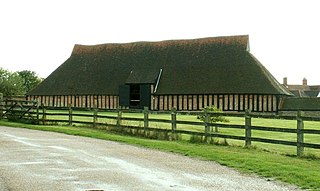
Cressing Temple is a medieval site situated between Witham and Braintree in Essex, close to the villages of Cressing and White Notley. It was amongst the very earliest and largest of the possessions of the Knights Templar in England, and is currently open to the public as a visitor attraction.

Braintree is a town in Essex, England. The principal settlement of Braintree District, it is located 10 miles (16 km) northeast of Chelmsford, 35 miles (56 km) northwest of Southend-on-Sea, and 15 miles (24 km) west of Colchester. According to the 2021 Census, the town had a population of 43,492, while the urban area, which includes Great Notley, Rayne, Tye Green and High Garrett, had a population of 55,792.
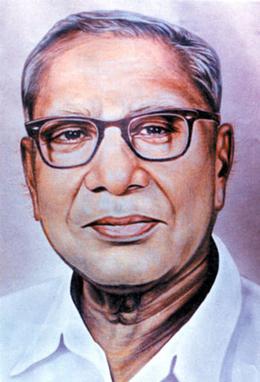
Ranada Prasad Shaha was a Bangladeshi businessman and philanthropist. He founded educational institutes like Bharateswari Homes, Kumudini College and Debendra College. 7 May 1971 the collaborators of Pakistani occupation army from Mirzapur abducted RP Saha and his son Bhavani Prasad Saha and no news about their whereabout has been unearthed till now.

Gosfield is a village in the Braintree district of Essex, England. It is located around two miles west of the town of Halstead.

Widford is an area of Chelmsford and former civil parish, in the City of Chelmsford district in the county of Essex, England. It is approximately 1.5 miles (2.4 km) south-south-west of the city's railway station. It encloses a mixed residential, industrial and rural area south of the River Can, east of the River Wid and mostly to the west of the Great Eastern Main Line. In 1931 the parish had a population of 457.
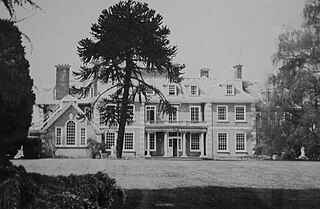
Michaelstowe Hall is a manor house in the village of Ramsey near Harwich, Essex, England.
203rd Infantry Brigade was a Home Defence formation of the British Army during the Second World War.

The Park Street riot occurred in Park Street and George Street Bristol, England, on 15 July 1944 when many black US servicemen (GIs) refused to return to their camps after US military policemen (MPs) arrived to end a minor fracas. More MPs were sent, up to 120 in total, and Park Street was closed with buses. In subsequent confrontations an MP was stabbed, a black GI was shot dead, and several others were wounded.
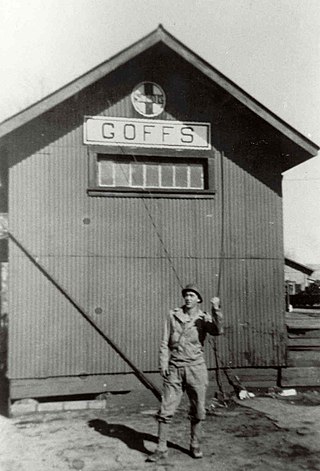
The Camp Goffs was a sub camp of the US Army Desert Training Center in Riverside County, California. The main headquarters for the Desert Training Center was Camp Young, this is where General Patton's 3rd Armored Division was stationed. Camp Goffs was designated a California Historic Landmark (No.985). The site of the Camp Goffs just north at the former Santa Fe Railroad station at Goffs, California. Goffs, California is on U.S. Route 66 5 miles north of the current Interstate 40, 25 miles (40 km) west of Needles in San Bernardino County, California. Currently at the south east end of the Mojave National Preserve. Camp Goffs was 20 miles southeast of Camp Essex and Camp Clipper.

Birmingham General Hospital was a World War II US Army Hospital in Van Nuys, California at the corner of Vanowen Street and Balboa Boulevard. The hospital was built in 1942 and 1943 to care for troops returning home from oversea service. The first patient checked-in on August 24, 1943. The hospital had 1,777 beds housed in single-story buildings over the 131-acre campus.
1.Braintree and Bocking;A pictorial history by John Marriage. Pub by Phillimore ISBN 0-85033-909-X




















